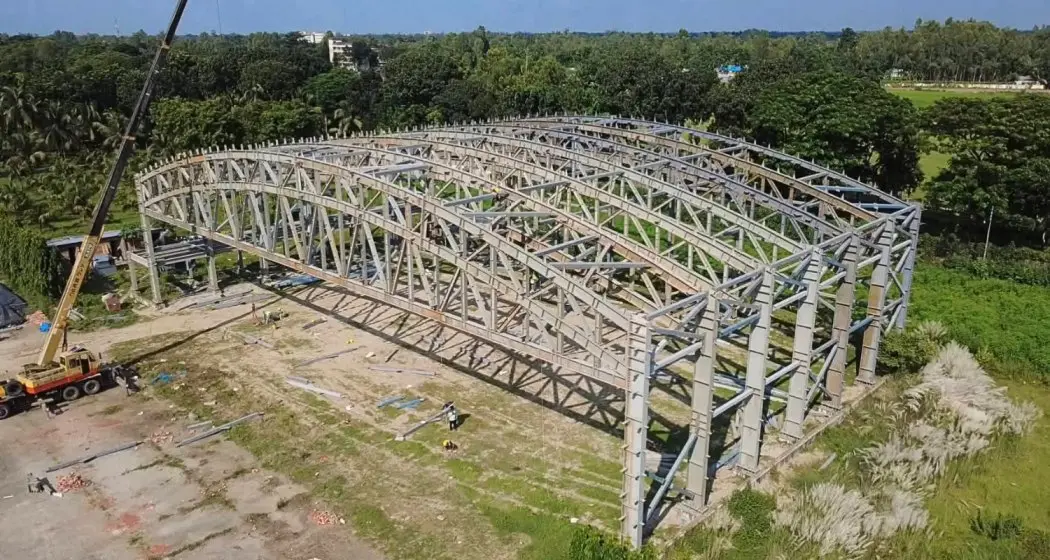Bangladesh is moving ahead with the installation of a new, advanced air defence radar system at Lalmonirhat airbase, situated close to India’s highly sensitive Siliguri Corridor — often referred to as the “Chicken’s Neck.” The corridor serves as the only narrow land link between mainland India and its northeastern states, making it one of the most strategically vital regions in South Asia.
According to official and intelligence sources, essential components for the radar system arrived at the Lalmonirhat base roughly two weeks ago via road transport. Construction crews are currently finalizing a dedicated platform and support building to host the radar, replacing the outdated legacy installation. The radar is expected to be positioned near the old wireless facility, about 70 metres from a newly built hangar capable of accommodating up to a dozen fighter jets.
Over the past six months, the Lalmonirhat airbase has undergone significant expansion, with new residential quarters and operational infrastructure springing up within the perimeter. Though the base does not currently host active combat squadrons, it supports regular helicopter and light aircraft operations. Defence analysts interpret these developments as an attempt by the Bangladesh Air Force (BAF) to strengthen its northern surveillance capabilities and improve overall situational awareness near the Indian border.
Strategic Sensitivity and Indian Observations
On 16 October, a joint inspection was conducted by Indian Military Intelligence officials, led by a Major General, alongside senior officers from the Bangladesh Army, including General Waker-uz-Zaman. The inspection covered Lalmonirhat, Thakurgaon, and Nilphamari installations. While construction was briefly paused during the visit, it resumed soon after, and work is now reportedly nearing completion. The interaction was seen as a gesture of transparency, but Indian defence planners continue to quietly monitor developments with caution.
China’s Expanding Footprint in Bangladesh’s Defence Sector
The radar deployment coincides with Dhaka’s deepening defence cooperation with Chinese firms. On 13 May, senior Bangladesh Army officials held discussions with representatives from China Vanguard Co Ltd to explore the procurement of systems such as HQ-17AE short-range surface-to-air missiles, JSG-series target detection radars, and FK-3 medium-range SAMs.
Reports suggest that the JSG-400 Target Detection Radar (TDR) — part of China’s HQ-9BE air defence suite — may be integrated into the project. This radar functions as a fire-control unit capable of tracking and guiding interceptors against both aircraft and ballistic missiles. First unveiled at the 2021 Zhuhai Airshow, the JSG-400 represents a substantial leap in detection and engagement capabilities.
Parallel Cooperation with Western Defence Partners
In addition to Chinese technology, Bangladesh has also procured advanced radar systems from Western partners. On 18 June, the Bangladesh Air Force commissioned its second GM 403-M radar at Bogura, developed by Thales Raytheon Systems. The radar — a fully digital, 3D, long-range surveillance system — offers exceptional range accuracy (within 50 metres) and is designed to detect a wide range of aerial threats, including low-flying drones and high-speed aircraft.
This induction followed the earlier deployment of the first GM 403-M unit at the 71st Squadron facility in Mirpur, Dhaka, in April 2025. Together, these systems form a multi-layered, networked radar grid capable of providing early warning and real-time data sharing across command centres.
Strategic Implications for India
The location of the Lalmonirhat radar, less than 100 kilometres from India’s Siliguri Corridor, has raised discreet but serious concern in New Delhi. Indian defence experts caution that advanced radar installations in close proximity to the corridor could enhance external visibility into India’s airspace, potentially impacting the strategic balance in the region.
While Dhaka insists that the move is part of a routine modernisation effort aimed at bolstering national air defence, the combination of Chinese and Western-origin systems gives the BAF a sophisticated, hybrid network capable of multi-domain tracking and integration with surface-to-air missile platforms.
As construction at Lalmonirhat accelerates, Indian defence planners are expected to maintain close surveillance of the site’s operational activation and radar coverage footprint. Observers note that India will be particularly attentive to whether these installations remain strictly defensive — or signal a broader strategic shift in Bangladesh’s air surveillance and regional posture.













